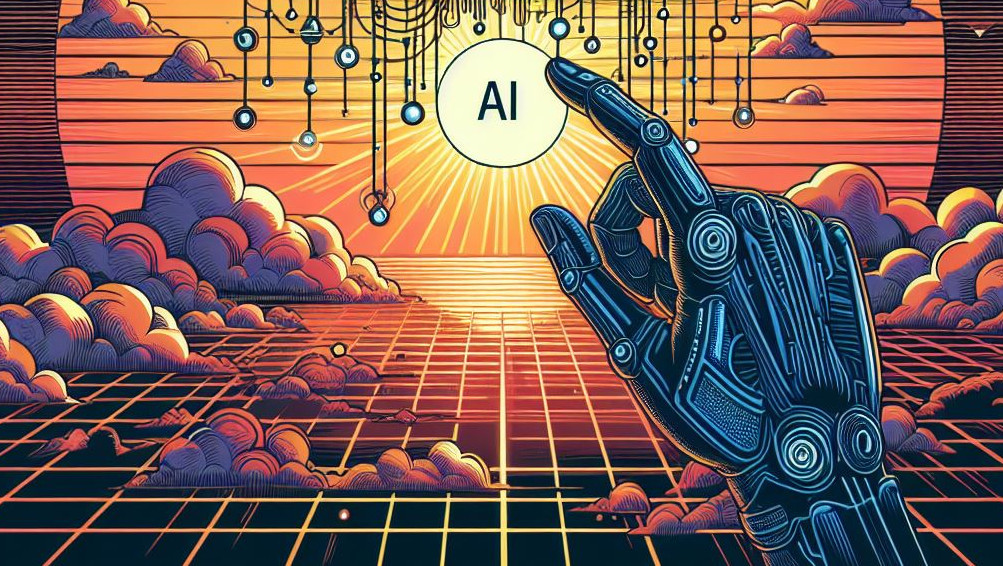Finding Ad Tech’s North Star in the AI Era
by Shirley Marschall on 18th Jun 2025 in News

Although AI is reshaping the industry, why does is still not feel like we are living in the future? Shirley Marschall explores when the real future of ad tech will arrive.
Gen AI is old news. AI agents are the thing now, and soon (at least according to Microsoft), we’ll all be agent bosses. While the Terminator might not knock on your door tomorrow, it certainly feels like AI is moving fast and expectations are rising even faster.
There is something odd though: why doesn’t all of this feel like the future?
We were raised on a very specific vision of what “the future” would look like. For many of us, that vision looked a lot like The Jetsons: flying cars, robot maids, elevated homes in orbit. The show was set in 2062, but by 2025, surely we’d have robotic dog-walkers and commute-free lives by now, right?
Instead, we got an app. AI-powered help with writing emails. Helpful? Yes. Futuristic? Not exactly. The robot maid? Still on backorder.
In ad tech, it’s even more surreal. AI is supposedly transforming everything – targeting, creative, measurement – and yet the output still looks like banner ads, CPMs, and a PDF wrap-up deck.
The science fiction author William Gibson once said: “The future is already here, it’s just unevenly distributed.”
But in ad tech, one could argue: The future is here, but it still looks like a media plan from 2017.
The Jetsons problem
Here’s the disconnect: we expected the future – the famous singularity – to be a bit more… well, futuristic. Most cities, homes, cars, and lives still look pretty normal. Definitely not like a sci-fi movie predicted 2025 would look.
Work? One step forward (WFH, four-day workweek), two steps back (to the office). It doesn’t feel all that different, does it?
We expected AI to swoop in like Rosie the Robot and take care of everything – briefs, planning, optimisation, maybe even client reporting. What we got was a few automated headlines and slightly smarter pacing algorithms.
In The Jetsons, even the dog had a flying treadmill. In ad tech, we’re still debating if clean rooms should be used for targeting or measurement.
This disconnect – between what AI is doing and how it feels – is key. AI is advancing rapidly behind the scenes, but the interfaces and workflows haven’t caught up. The revolution is buried under layers of legacy.
The hype hangover
The industry’s scar tissue is real. We’ve just emerged from a string of tech hype cycles that overpromised and underdelivered. NFTs, crypto, AR, VR, the metaverse (who didn’t just cringe?), buzzwords that now mostly prompt polite grimaces and internal eye rolls. The infamous “Q5” release season became a running joke.
Against that backdrop, AI is different (though the jury is still out on scale) but the skepticism is louder this time.
We’ve come a long way, from fax machines to real-time bidding to a full-blown ad tech stack now lightly sprinkled with AI.
The invisible transformation
Behind the dashboards, AI is absolutely reshaping ad tech:
- Algorithms now optimise creative rotation in milliseconds.
- Predictive models help identify audiences long before intent signals fire.
- AI-generated variants and summaries accelerate production timelines.
But all of it happens quietly, buried behind interfaces that haven’t significantly evolved in years. The outputs still require justification via slide decks, approvals, and attribution models that rarely reflect reality.
The problem isn’t that AI hasn’t arrived in ad tech. It’s that it’s been absorbed by the system, reduced to just another optimisation layer in an already bloated stack.
So how do we leap to something fundamentally new without a blueprint?
Searching for a North Star
Futurist Amy Webb recently predicted: “2025 will go down as the year the Frontier Firm was born, the moment when companies moved beyond experimenting with AI and began rebuilding around it.”
This transformation, she says, is already underway. And yet most of us in ad tech are still working within frameworks built for a pre-AI world.
Even Microsoft – admittedly, not exactly the ad tech North Star – is offering directional clues. The company recently announced it would sunset Xandr, its DSP, and replace it by early 2026 with an AI-powered buying platform built into Copilot.
Think about that. A DSP, reimagined as an AI agent.
Not a feature. Not a dashboard. An entirely new construct.
Is it the North Star? Maybe not. But it’s a signal that rebuilding is possible. That AI can be more than a bolt-on. That maybe, just maybe, our tools can start to feel like the future again.
The problem isn’t AI, it’s our imagination
Maybe the real issue is this: AI didn’t come with a new UX. It came with better math. And in ad tech, we’ve mostly used it to optimise what already exists, not to reinvent it.
Microsoft calls it “agentic computing.” Amy Webb calls it the dawn of the “Frontier Firm.” Whatever you call it, the message is the same: AI is no longer the experiment, it’s becoming the infrastructure.
But our stack? Still trapped in incremental thinking:
Smarter recommendations? Yes.
Better audience lookalikes? Sure.
Real-time creative adaptation? Kinda.
That’s not reinvention. That’s optimisation.
In advertising, the future won’t arrive with a shiny robot. It will emerge through:
- Experiences that adapt in real time, not just target based on past behavior.
- Strategies that anticipate intent, not just react to it.
- Workflows that feel intelligent and intuitive, not stitched together with spreadsheets.
Until that happens, AI in ad tech will continue to feel underwhelming – not because it’s ineffective, but because we haven’t reimagined what the experience could be.
Rosie would expect more
So maybe we won’t get flying cars. Maybe Rosie the Robot won’t build our media plans. But if we’re serious about AI, it’s time to stop patching our stack and start reimagining it.
The real future of ad tech won’t arrive when we say we’re using AI. It will arrive when we build something only AI could make possible, something so intelligent, adaptive, and intuitive that we forget how clunky things used to be.
Because honestly? Rosie would’ve expected more.








Follow ExchangeWire